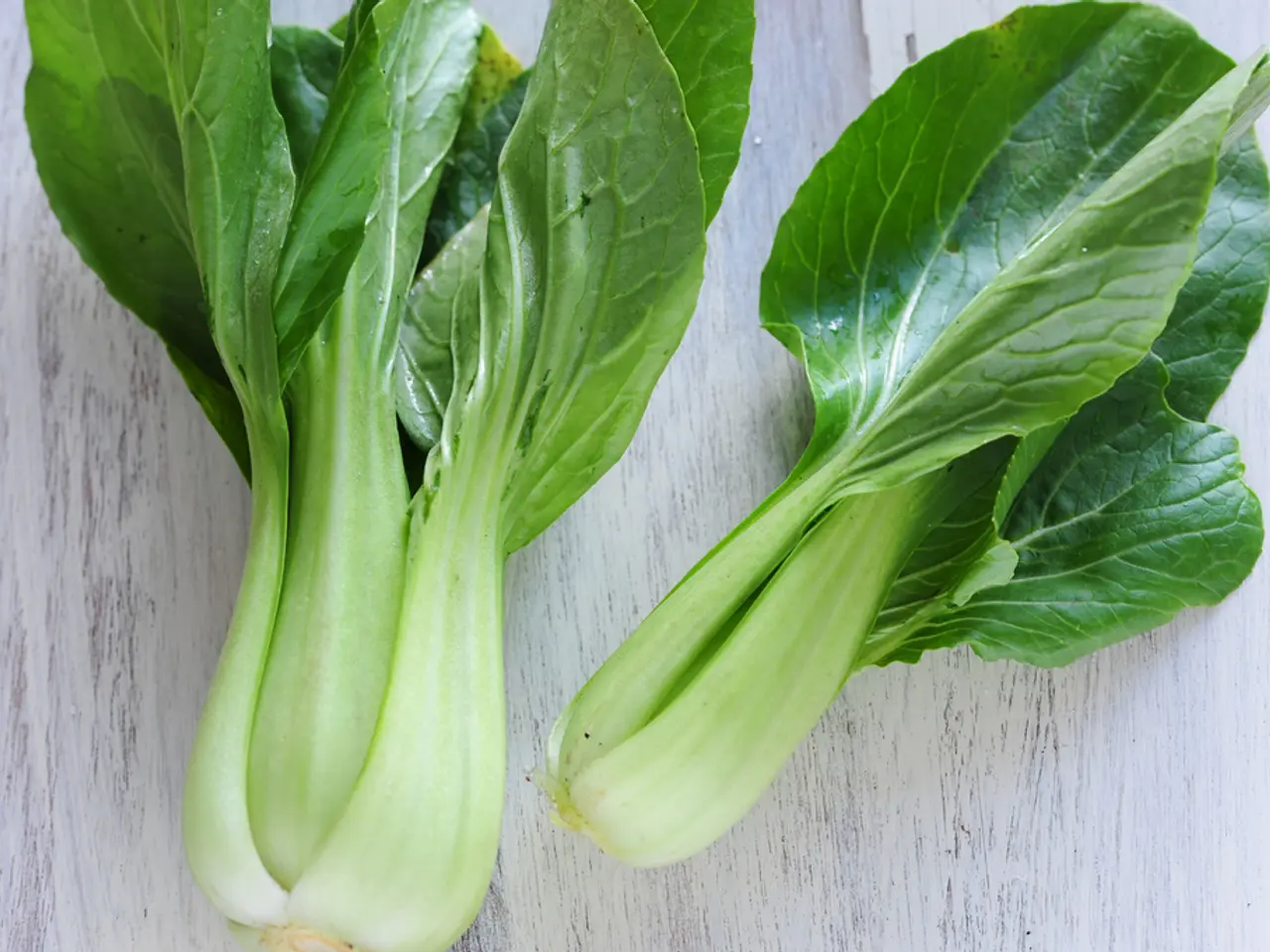Top winter vegetables to cultivate in your garden
As the chill of winter sets in, gardeners can still enjoy a bounty of fresh produce by growing a variety of winter vegetables with the help of protective structures and covers. These affordable frost protection methods, such as fleece, cloches, and unheated greenhouses or cold frames, can extend the growing season well into the colder months.
One such vegetable that thrives under these conditions is lettuce. Varieties like 'Red Salad Bowl' and 'Black-Seeded Simpson' can be grown in cold frames into early winter[2]. For those seeking a more diverse salad mix, winter-hardy greens such as mizuna and pak choi can be sown in autumn and protected by these season extenders[4].
Onions are another vegetable that benefits from the protection offered by fleece covers. These covers help shield onions from insect pests like the allium leafminer, preventing flies from laying eggs[3].
Brassicas, such as turnips, Brussels sprouts, and kale, can also be grown through winter. However, it's essential to net these crops to protect them from pests and diseases like club root, a fungal disease that lives in the soil[6].
Some brassicas, like Brussels sprouts and turnips, are sown in spring, while others, such as kale and winter cabbage, thrive in cold conditions[7]. A particularly attractive and hardy variety of kale is 'Nero di Toscano'.
Chard, sown in September, can be harvested from October with protection during frosts. A colourful ornamental variety is 'Bright Lights', with stems in red, yellow, and white[8].
Root vegetables like turnips, parsnips, and celeriac can be grown without special equipment. Turnips, sown in August, make an ideal winter root vegetable for roasting and grilling, with 'Golden Ball' being a popular choice[9]. Parsnips, such as 'Tender and True', bear long, slender roots that are perfect for roasting and mashing[10]. Celeriac 'Mars' bears large roots that can be overwintered in the ground. Celeriac is closely related to celery and has a similar flavour.
Another winter vegetable is chicory, with 'Rossa di Treviso Precoce' bearing long pointed green foliage that turns red as the weather gets colder[11]. Purple sprouting broccoli, such as the British bred variety 'Purple Rain', overwinters and crops early in spring[12].
To make the most of your winter crops, consider investing in cloches, fleece, and cold frames. For those growing brassicas, it's a good idea to net your crops to protect them from pigeons[13].
In conclusion, beyond the common winter vegetables, you can grow lettuce, salad greens, pak choi, mizuna, onions, turnips, Brussels sprouts, kale, chard, chicory, turnips, parsnips, celeriac, and purple sprouting broccoli through winter by applying fleece, cloches, or using unheated greenhouses and cold frames for frost protection and season extension[1][2][3][4][5]. However, ensure you have the right conditions to grow winter vegetables, including soil type, shelter, and sunshine if needed.
- Engage in some healthy cooking by experimenting with global cuisines using fresh, winter-grown ingredients such as lettuce, onions, kale, chard, chicory, turnips, Brussels sprouts, and purple sprouting broccoli.
- By incorporating winter-hardy greens like mizuna and pak choi into your interior-design through fresh, living plants, you can bring a touch of outdoor-living and a sense of sustainability to your home-and-garden lifestyle.
- Fashion-and-beauty enthusiasts can even incorporate the vibrant colors of winter vegetables like beetroot, carrots, and radishes into their makeup and clothing, mirroring the diversity found in food-and-drink pairings.
- With the help of home-improvement methods like cloches, fleece, and cold frames, frost protection becomes accessible and affordable for gardeners who want to extend their growing season into winter, allowing them to harvest a bounty of fresh produce all year round.
- For a healthier lifestyle, replace processed snacks with homemade vegetable chips made from winter-hardy root vegetables like parsnips, turnips, and celeriac. Search for creative recipes online to enjoy guilt-free, nutritious snacks.
- Embrace sustainable-living practices by composting kitchen scraps, such as vegetable peels, to create nutrient-rich soil for your garden, and by planting crops that require minimal water and nutrients, like kale and chard, to promote conservation and continue enjoying a bounty of fresh produce in your home and garden.






